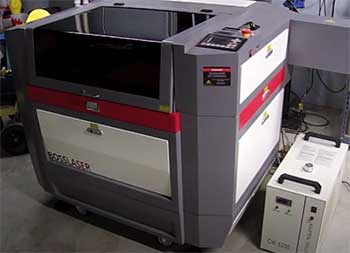Let’s talk about something you might not think about every day: your car’s tires and how they affect gas mileage. When it comes to fuel efficiency, most of us focus on things like driving habits or engine maintenance.
But did you know that your tires play a crucial role in how much gas your car guzzles? In this guide, we’ll dig deep into the relationship between tires and gas mileage. By the end, you’ll have a clear understanding of how to optimize your tires to save on fuel costs. So, buckle up, and let’s get rolling!
Understanding the Basics: Why Tires Matter
First things first, why do tires matter when it comes to gas mileage? It’s all about resistance. When your car moves, it faces resistance from various forces, and one of the biggest contributors is the rolling resistance of your tires. Rolling resistance is the force that your tires need to overcome to keep moving. The higher the rolling resistance, the more fuel your car needs to expend to maintain speed.

Imagine trying to push a heavy box across a rough carpet versus a smooth floor. The carpet offers more resistance, so you need more effort (or energy) to push the box. Similarly, tires with higher rolling resistance require more energy (fuel) to keep your car moving.
Tire Types: Choosing the Right Tires for Fuel Efficiency
Not all tires are created equal when it comes to fuel efficiency. There are different types of tires, each designed with specific purposes in mind, and some are better suited for improving gas mileage than others.
- All-Season Tires: These are the most common tires you’ll find on cars. They offer a good balance of performance, durability, and fuel efficiency. However, they might not be the best if you’re looking to maximize your gas mileage.
- Performance Tires: Designed for high-speed handling and performance, these tires have higher rolling resistance due to their softer rubber compounds and aggressive tread patterns. They can negatively impact your fuel efficiency.
- Touring Tires: These are designed for long-distance driving and comfort. They usually have lower rolling resistance than performance tires, making them a better choice for fuel economy.
- Eco-Friendly Tires: Specifically designed to enhance fuel efficiency, these tires use special rubber compounds and tread patterns to minimize rolling resistance. If fuel economy is your top priority, eco-friendly tires are worth considering.
Tire Pressure: The Simple Secret to Better Mileage
One of the easiest and most effective ways to improve your gas mileage is by maintaining the correct tire pressure. Under-inflated tires increase rolling resistance, which means your engine has to work harder to move the car. On the other hand, properly inflated tires reduce rolling resistance and improve fuel efficiency.

Here’s what you need to do:
- Check Tire Pressure Regularly: Make it a habit to check your tire pressure at least once a month and before long trips. Use a reliable tire pressure gauge to ensure accuracy.
- Know the Right Pressure: Refer to your car’s owner’s manual or the placard inside the driver’s door to find the recommended tire pressure for your vehicle.
- Adjust as Needed: If you find your tires are under-inflated, fill them up to the recommended level. Don’t overinflate, as this can cause uneven tire wear and reduce traction.
Tire Tread: More Than Just Grip
Tire tread isn’t just about traction; it also affects your gas mileage. The tread pattern and depth can influence rolling resistance. Tires with deep, aggressive treads (like those on off-road or winter tires) have higher rolling resistance, which can lower your fuel efficiency. Conversely, tires with a more streamlined tread pattern are designed to reduce rolling resistance and improve gas mileage.
[su_note]Also Read: Struggling to choose between Cooper tires or Milestar tires?[/su_note]
Consider the following:
- Tread Wear: As tires wear down, their rolling resistance decreases. However, worn tires can be unsafe, so it’s important to balance tread wear with safety.
- Tread Design: Look for tires with a low rolling resistance tread design if you’re aiming to improve fuel efficiency. These designs typically have shallower treads and more continuous ribs, which help reduce resistance.
Wheel Alignment and Balancing: Keeping Things Straight
Proper wheel alignment and balancing are crucial for maintaining good fuel efficiency. Misaligned wheels can cause your tires to drag, increasing rolling resistance and reducing gas mileage. Similarly, unbalanced tires can create uneven wear and tear, further impacting fuel economy.
- Get Regular Alignments: Have your wheel alignment checked and adjusted as needed. This is especially important if you notice your car pulling to one side or if you’ve recently hit a pothole or curb.
- Balance Your Tires: Ensure your tires are balanced to prevent uneven wear and reduce rolling resistance. This can usually be done when you have your tires rotated.
Tire Size: Bigger Isn’t Always Better
When it comes to tires, size matters more than you might think. Larger, wider tires can increase rolling resistance, which can negatively impact your gas mileage. On the flip side, smaller, narrower tires typically have lower rolling resistance and can help improve fuel efficiency.
- Stick to Manufacturer Recommendations: Always refer to your car’s manufacturer recommendations for tire size. Using the recommended size ensures optimal performance and fuel efficiency.
- Consider Downsizing: If you’re really focused on improving gas mileage and your car allows for it, consider downsizing to a slightly smaller tire. However, be cautious and make sure any changes are safe and appropriate for your vehicle.
Seasonal Tires: Adapting to Conditions
Different seasons require different tires, and using the right tires for the right season can also impact your gas mileage. Winter tires, for example, are made with softer rubber and deeper treads to handle snow and ice, which can increase rolling resistance. On the other hand, summer tires are designed for warmer conditions and typically have lower rolling resistance.
[su_note]Also Read: All-Season Weather Ready Tire[/su_note]
- Switch Tires Seasonally: If you live in an area with significant seasonal changes, consider switching between winter and summer tires to optimize performance and fuel efficiency.
- All-Season Alternatives: If changing tires twice a year sounds like a hassle, all-season tires can be a good compromise, offering decent performance and fuel efficiency year-round.
Driving Habits: How You Drive Matters
Your tires and driving habits go hand in hand when it comes to fuel efficiency. Aggressive driving – like rapid acceleration, hard braking, and speeding – can increase tire wear and rolling resistance, reducing your gas mileage. Here’s how you can drive smarter to make the most of your tires and improve fuel economy:

- Smooth Acceleration and Braking: Accelerate gradually and brake gently to reduce strain on your tires and improve gas mileage.
- Maintain Steady Speeds: Use cruise control on highways to maintain a constant speed and reduce rolling resistance.
- Reduce Load: Avoid carrying unnecessary weight in your car. The heavier the load, the more fuel your car will use.
Tire Maintenance: Regular Checkups for Better Mileage
Regular tire maintenance is key to ensuring your tires perform at their best and contribute to better gas mileage. Here’s a checklist to keep your tires in top shape:
- Rotate Tires Regularly: Rotate your tires every 5,000 to 7,000 miles to ensure even wear and extend their lifespan.
- Check for Damage: Inspect your tires for cuts, punctures, or other damage that could affect performance and fuel efficiency.
- Replace When Necessary: Don’t wait until your tires are completely worn out. Replace them when the tread depth reaches 2/32 of an inch, or sooner if you notice significant performance issues.
Conclusion: Roll Your Way to Savings
So, there you have it – a comprehensive guide on how tires affect gas mileage and what you can do to maximize your fuel efficiency. By choosing the right tires, maintaining proper tire pressure, ensuring correct alignment, and adopting smart driving habits, you can significantly improve your gas mileage and save money at the pump.
Remember, every little bit helps. Whether it’s a simple tire pressure check or investing in eco-friendly tires, these small changes can add up to big savings over time. So next time you think about fuel efficiency, don’t forget to give your tires the attention they deserve. They’re more than just rubber on the road; they’re your ticket to better gas mileage and a smoother ride. Happy driving!

